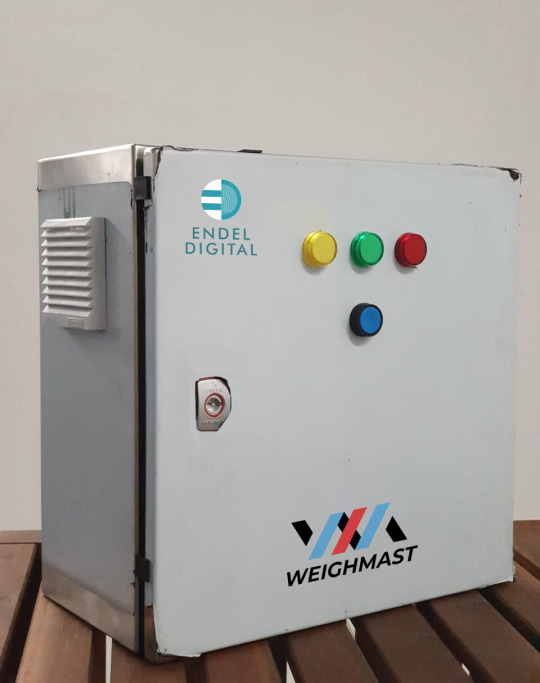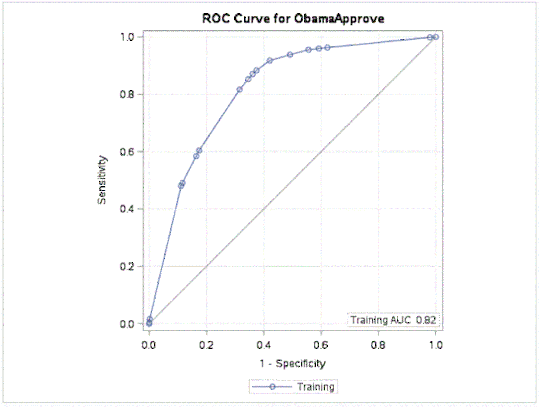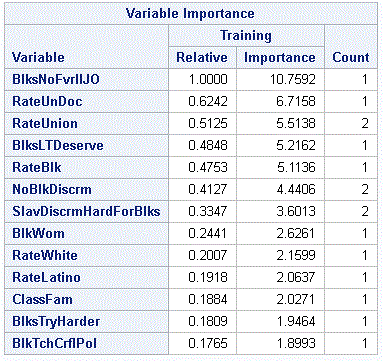#ReduceErrors
Explore tagged Tumblr posts
Text
0 notes
Text

Seamless Integration: Sync Invoices with Zoho CRM and Zoho Books
Tired of manual data entry? Our Zoho CRM extension automates invoice syncing, saving you time and reducing errors. Seamlessly transfer invoices from CRM to Books with just a few clicks. Experience the power of integration and streamline your business processes.
Key Benefits:

Contact SNS System today! Let's discuss how our Zoho CRM extension can transform your business.
Link: https://snssystem.com/.../sync-invoice-in-zoho-books.../ https://snssystem.com
#ZohoCRM#ZohoBooks#InvoiceSync#AutomatedIntegration#SeamlessWorkflow#ReduceErrors#BusinessEfficiency#DataAutomation#StreamlinedProcesses#ZohoExtensions#SaveTime#ImproveAccuracy#SNSSystem#EnhancedDataManagement#CRMIntegration#business#marketing
0 notes
Text

🔓 Unlock efficiency: Automate your AR and AP processes! Streamline operations, reduce errors, and accelerate your financial workflows. Transform your business with automation today! 💼✨
Visit : https://bautomate.com/
#bautomate#Automation#Efficiency#AccountsReceivable#AccountsPayable#BusinessGrowth#FinancialTech#TechInnovation#WorkflowAutomation#ReduceErrors#DigitalTransformation
0 notes
Text
Upgrade Business Efficiency with Barcode Labels by Kwality Labels
In today’s fast-paced world, the efficiency and accuracy of managing inventory and assets are crucial for businesses. That's where barcode labels by Kwality Labels come into play. These tiny but powerful tools streamline processes, reduce errors, and save valuable time.
Barcode labels by Kwality Labels are essential for any business looking to enhance its operational efficiency. They offer a simple yet effective way to keep track of products, whether in retail, warehousing, or logistics. With barcode labels by Kwality Labels, you can quickly scan items to update stock levels, track shipments, or manage assets with precision.
One of the key advantages of using barcode labels by Kwality Labels is the reduction of human error. Manual data entry is prone to mistakes, which can lead to costly errors and inefficiencies. However, with barcode labels by Kwality Labels, scanning a barcode ensures accurate data capture every time, significantly reducing the risk of errors.
Moreover, barcode labels by Kwality Labels improve the speed of transactions. Whether it’s at the checkout counter or during inventory audits, barcode scanning is much faster than manually entering product information. This speed not only enhances customer satisfaction but also allows employees to focus on more critical tasks.
In summary, barcode labels by Kwality Labels are an indispensable tool for businesses aiming to improve accuracy, efficiency, and productivity. By incorporating barcode labels by Kwality Labels into your operations, you can ensure seamless management of your inventory and assets, ultimately leading to a more successful and streamlined business.
#BarcodeLabels#KwalityLabels#BusinessEfficiency#InventoryManagement#AccurateTracking#OperationalEfficiency#ReduceErrors#StreamlineProcesses#FastTransactions#ProductivityBoost
0 notes
Text

DriveWorks Professional Training by Design and Automation Services equips your team with the skills to automate design processes, reducing errors and increasing sales efficiency. 🚀
Master DriveWorks to deliver custom products faster and more accurately. 🎯 Transform your workflow today. Enroll now and start boosting your business success! 📈
Call us on ���� +91 9574 024 279
or
Visit: https://www.designautomations.com/
#DesignAndAutomationServices#DriveWorks#Automation#Efficiency#SalesBoost#CustomProducts#WorkflowTransformation#EngineeringExcellence#ReduceErrors#MasterDriveWorks#DriveWorksTraining#DesignAutomation#DriveWorksPro
1 note
·
View note
Text

Our smart automation panel is designed for excellence. Integrate smart hardware with your weighbridge to eliminate the need for manpower, and reduce the chances of errors and malpractices with complete automation
contact us for details : https://endel.digital/contact-us/
#automation#manlessweighbridge#theftprevention#reduceerror#contactforinquiry#endeldigital
0 notes
Link
(この投稿は Aditya Naag Topalli(Salesforce.com) による『Error Handling Best Practices for Lightning Web Components』の翻訳です) エラー処理はどのようなアプリケーションにとても重要であり、設計段階からアプリに組み込むべきです。適切に定義されたエラー処理パターンとベストプラクティスを使用することで、アプリが予想されるエラーと予想外のエラーの両方を一貫して優雅に処理できるようになります。このブログでは、Lightning Web コンポーネントのエラー処理のベストプラクティスについて説明します。Lightning Web コンポーネントのフレームワークは標準ベースなので、ほとんどのエラー処理のベストプラクティスも標準に基づいています。 サーバーサイドのエラー処理 Lightning Web コンポーネントは、サーバー上のデータの存在に依存する UI フレームワークです。Lightning Web コンポーネントを使用して Salesforce のデータを操作する最も簡単な方法は、基本 Lightning コンポーネントと Lightning データサービスによって提供されるワイヤアダプタを使用することです。しかし、データをクライアントに返す前に、カスタムビジネスロジックを実行して複雑な変換を適用する必要がある場合もあり、このカスタムロジックは通常、Apex を使用して記述されます。 Apex のメソッドは、さまざまな例外を投げることができます。これらには、クエリの例外、DML の例外、およびパースや型変換などのビジネスロジックからの一般的な例外が含まれます。Apex コードで処理せずに例外を直接クライアントに送信させることもできますが、予めサーバー側でエラーを処理することで、どの種類のエラーをクライアントに表示するか、どの種類のエラーをバックエンドで処理するかを制御することができます。 エラーを処理する最良の方法は、try-catch ブロックの中でロジックをラップすることですが、リミット例外 (System.LimitException) のように、キャッチブロックでは処理できない種類のエラーもあります。フロントエンドに例外を投げるときは必ず、独自のカスタム例外クラスを作成して、エラーメッセージをカスタマイズしたり、クライアントに送信される例外の詳細を抽象化することをお勧めします。 03} catch (Exception e) {04 throw new CustomException(e.getMessage());08public class CustomException extends Exception { ベストプラクティスとして、エラーを送信するための共通の構造を決め、すべてのバックエンドクラスでそれに従うようにしてください。事前に定義されたエラータイプがあれば、クライアントに返す詳細を簡単に決めることができます。 クライアント側でのエラーの処理 クライアント側で発生する全てのエラーが同じように処理できるわけではありません。ここでは、Lightning Web コンポーネントのエラーの発生源によって、エラー処理の仕組みがどのように変わるのかを見ていきます。 try-catch ブロック try-catch はコード内のエラーを処理する最も一般的な方法ですが、誤用される可能性があります。すべてのコードを try ブロック内に配置することは、ベストプラクティスとは考えられていません。try ブロック内に配置されるコードは、そのコードによって発生するエラーがどのように処理されるかに基づいていなければなりません。異なるコードブロックからのエラーを異なる方法で処理しなければならない場合は、複数の try-catch ブロックを使用してください。また、catch ブロックは、その中で発生する可能性があるエラーのみを処理し、残りはさらに伝搬させるべきです。 覚えておくべきことは、try-catch ブロックは同期コードの例外のみを処理できるということです。setTimeout や Promise のように、非同期コードの実行で例外が発生した場合、try-catch はそれをキャッチしません。以下の例では、エラーが非同期プロセス内で発生したため、キャッチブロックは実行されません。 3 throw new Error('some error');6 console.error("An error occurred"); ワイヤ、命令的呼び出し、プロミスなどの非同期処理によるエラー 前述したように、非同期呼び出しのエラーは、try-catch ブロックの中で呼び出しをラップしてもキャッチできません。setTimeout や setInterval のような時間ベースのイベントの場合は、コールバック関数の内部で try-catch ブロックを使用してエラーを処理する必要があります。 ワイヤード・メソッドの場合、潜在的なエラーの発生源が 2 ヶ所があります。それは、ワイヤアダプタによる値のプロビジョニング中と、プロビジョニングされた結果を処理するためのカスタムロジックの実行中です。値のプロビジョニングでエラーが発生すると、エラープロパティに自動的に格納されます。このプロパティを解析することで、エラーの原因を知ることができ、それに応じて処理することができます。データのプロビジョニングが正常に行われ、データを処理するロジックからエラーを処理したい場合は、以下の例のようにトライキャッチブロック内にロジックを配置します。 02wiredContacts({ error, data }) { 命令的な呼び出しや Promise を使用する場合、エラーを処理する方法は 2 つあります。 1.catch メソッドを使用して、プロミスチェーン全体で発生するエラーを処理します。これには、サーバーからのエラーと then メソッドに書かれたロジックからのエラーが含まれます。catch() メソッドを省略すると、then() メソッドからのエラーを破棄してしまいます。ベストプラクティスとして、すべてのプロミスに catch メソッドがあることを確認してください。下の例では、getContactList と then メソッドの両方で投げられたエラーを catch メソッドが処理しています。 2.非同期関数を呼び出すもう一つの方法に async/await パターンがあり、この場合は同期関数と同じようにコードを try-catch ブロックの中にラップします。 3 let result = await getContactList(); コンポーネントのライフサイクルハンドラ内のエラー コンポーネントのライフサイクルハンドラには、クラスの初期化などを行う constructor() の他、connectedCallback()、renderedCallback() などがあります。ライフサイクルハンドラ内で発生したエラーは、try-catch ブロックでラップすることができますが、プロパティ値を計算する際に発生したエラーは同じように処理することができません。 2export default class PropertyInitErrorExample extends LightningElement { クラスのフィールド/プロパティの値はインラインで計算しないようにし、計算にはゲッターメソッドを使用して、必要に応じてメソッド内のロジックを try-catch ブロックでラップできるようにします。また、コンポーネントのライフサイクル内のエラーを処理するために、errorCallback() ハンドラを使用して境界コンポーネントとしての処理を記述することもできます。これについては、「エラーのライフサイクルと伝播」のセクションで詳しく説明します。 エラーの表示とロギング さまざまな種類のエラーをキャッチする方法を見てきましたが、次は Lightning Web コンポーネントでこれらのエラーを表示する際のベストプラクティスを見てみましょう。 エラー本体のペイロードを理解する エラーを表示する前に、様々なシナリオでキャッチするエラーオブジェクトの構成を理解しておくと便利です。 JavaScript や Web Platform API では、ReferenceError や TypeError などの reject エラータイプを投げます。これらはすべて、以下のプロパティを持つ Error オブジェクトを継承しています。 name – 投げられた例外のタイプ message – エラーメッセージ stack – スタック・トレース 以下にコードスニペットの例と、その結果のコンソール出力を示します。 2 undefinedVariable.toString();5 console.error( ' + e.name );6 console.error( ' + e.message );7 console.error( ' + e.stack ); Apex または Lightning データサービスを使用して Salesforce データにアクセスすると、Fetch API の Response オブジェクトをモデルにした上の例とは異なる構造のカスタムエラーオブジェクトを使用してエラーが表示されます。以下はカスタムエラーオブジェクトに含まれるプロパティの例です。 ok – リクエストの成否 status – レスポンスの HTTP ステータスコード。たとえば内部サーバー エラーの場合は 500。 statusText – ステータスコードに対応するステー��スメッセージ body – レスポンスボディ。エラーをスローしたメソッドに応じて異なる。 Apex によって投げられた補足されない例外とカスタム例外については、body プロパティで例外の種類 (body.exceptionType)、エラーメッセージ (body.message)、Apex スタックトレース (body.stackTrace) などの追加の詳細を確認できます。以下にコードスニペットの例とその結果のコンソール出力を示す。 03public static Integer someMethod() { サーバー上のレコードやオブジェクトなどのリソースにアクセスできない場合や、ワイヤアダプタに無効なオプション(無効なレコード ID や必須フィールドの欠落など)を渡した場合、または検証ルールが失敗した場合に、Lightning データサービスでエラーが発生します。Lightning データサービスは、Apex が返すものと非常によく似たカスタムエラーオブジェクトを返しますが、エラーの body プロパティの値は API によって異なります。このオブジェクトには単一のオブジェクトまたはオブジェクトの配列が含まれている場合があるため、ロジックはこれを解析する際に両方のデータ型をチェックする必要があります。以下に例を示します。 01@wire(getRecord, { recordId: '$recordId', fields })02wiredRecord({error, data}) {05 if (Array.isArray(error.body)) {06 this.error = error.body.map(e = e.message).join(', ');10 else if (typeof error.body.message === 'string') {11 this.error = error.body.message; ご覧になったように、エラーオブジェクトの構造はそれぞれのケースで異なります。各コンポーネントで異なる種類のエラーオブジェクトを解析するロジックを繰り返すのではなく、これを行う単一の関数を作成し、それを各コンポーネントのモジュールとしてインポートすることができます。 ベストプラクティスとして、LWC Recipes(Lightning Web コンポーネントのコード例集)にある reduceErrors 関数を使用して、異なる種類のエラーオブジェクトを処理します。この関数は、メッセージプロパティを抽出し、複数のメッセージプロパティが見つかった場合にメッセージを連結します。ここでは、先ほどのコードスニペットを簡略化するためにどのように使用できるかの例を紹介します。 01import { reduceErrors } from 'c/utils';04@wire(getRecord, { recordId: '$recordId', fields })05wiredRecord({error, data}) {07 this.errorMessage = reduceErrors(this.error); しかし、サードパーティのコードを扱う際には、エラーボディのペイロードが若干異なる場合があることを覚えておきましょう。JavaScript の throw 文は、数値や文字列を含む任意の式を投げることができます。そのため、サードパーティのコードからの例外を扱う際には、上で説明したアプローチでは不十分な場合があるので注意が必要です。 エラーの表示 エラーの表示はおそらくエラー処理メカニズムの中で最も重要な部分です。エラーはユーザに意味のある方法で表示されなければなりません。最も推奨される方法は、エラーが発生したポイントの近くでユーザーにエラーを表示することです。例えば、テキストフィールド。ボタンがクリックされたときにエラーが発生する場合や、エラーが複数の箇所で発生した場合は、トーストメッセージがより適切です。 基本 Lightning コンポーネントは、フォームにエラーメッセージを表示するための簡単で一貫性のある方法を提供します。基本 Lightning コンポーネントは、検証状態に応じてフォームコントロールやフォーム自体に CSS クラスを自動的に追加したり削除したりします。reportValidity メソッドと setCustomValidity メソッドを使用して、エラーメッセージをプログラムで制御することができます。 また、エラーメッセージはユーザーフレンドリーであるべきで、エラーが発生したことを示すだけでは役に立ちません。メッセージは、エラーが何であるか、そしてユーザーがそれを修正するために何ができるかを正確に示す必要があります。 一貫したエラー処理と表示メカニズムを持つためには、エラーを表示するための再利用可能なコンポーネントを作成し、すべてのコンポーネントでそれを使用することがベストプラクティスです。これは、LWC Recipes の errorPanel コンポーネントでも利用されています。また、このコンポーネントは先ほど説明した reduceErrors 関数を使用して、すべての形式のエラーオブジェクトを処理し、一貫したユーザーインターフェイスを表示します。以下に例を示します。 1<template if:true={error}2 <c-error-panel errors={error}</c-error-panel エラー・ロギング ユーザーにエラーを表示するだけでなく、コンソールにエラーを出力することもできます。console.error() 関数を使用すると、元のエラーメッセージのコールスタックを記録しつつ、呼び出された console.error() のコールスタックも記録されるため、ベストプラクティスとして使用してください。これは、DevTools コンソールでメッセージの横にある矢印をクリックすると表示されます。 すべてのコンソール ロギング API は複数の引数を受け入れます。捕らえたエラーにさらに情報を追加する必要がある場合は、console.error(‘Unexpected error during some operation’, error) を使用します。 また、より良い追跡と報告の目的のために、可能な限りエラーはサーバーに記録します。これは、本番環境で問題をデバッグする際に最も有用です。アプリケーションの運用が開始されると、エンドユーザが明示的に共有しない限り、ログに記録された出力に開発者がアクセスできないため、 console.error に何の価値もありません。 エラーのライフサイクルと伝播 すべてのエラーが発生源での近くに表示できるわけではなく、また、すべてのエラーがユーザー・インターフェースを持つコンポーネントで発生するわけではありません(サービス・コンポーネントなど)。そのようなエラーを表示するためには、親コンポーネントに伝搬されなければなりません。未処理のエラーはデフォルトではコンポーネント階層を介して伝搬されることになります。 Lightning Web コンポーネントのエラーライフサイクル コードでエラーが発生した場合、Javascript はエラーをキャッチするハンドラを探します。エラーの発生源にできるだけ近いところで処理するのがベストプラクティスです。Lightning Web コンポーネントの場合、処理されていないエラーは子コンポーネントから親コンポーネントに伝搬します。最上位の親コンポーネントがエラーを処理しない場合は、Lightning ランタイムに投げられます。 同期操作によるエラーは、エラーの行番号とスタックトレースを含む “Sorry to interrupt” ポップアップを表示することで、Lightning ランタイムが処理します。エラーはそれ以上ブラウザに伝わりません。ワイヤ関数やプロミスなどの非同期操作によるエラーの場合、エラーはブラウザに伝わり、ブラウザのコンソールに表示されます。またランタイムは、コンテキストに応じて画面にエラーを表示します。例えば、Lightning Experience で Lightning Web コンポネントを実行している場合、非同期エラーは UI に表示されません。しかし、フロー内でLightning Web コンポーネントを実行している場合、フローのランタイムは画面の下部にエラーを表示します。 エラーの伝播 上のライフサイクルで見たように、処理されていないエラーはデフォルトで伝搬します。しかし、上記のいずれかのエラー処理メカニズムを使用する場合、コンポーネントレベルでエラーを処理するか、他のコンポーネントに処理を任せるために伝搬させるかを選択することができます。エラーは、throw キーワードを使用するか、カスタムイベントを使用して伝搬させることができます。throw キーワードを使用すると、使用された時点で関数が停止しますが、カスタムイベントを使用すると、イベントを実行した後の処理を柔軟に決めることができます。throw キーワードを使用してスローされたエラーは、コンポーネントの親によってのみ処理できますが、カスタムイベントを使用すると、階層外のコンポーネントを使用して処理することもできます。 ベストプラクティスとして、低レベルのコンポーネント(サービス・コンポーネント、ユーティリティ関数など)からエラーを伝搬し、高レベルのコンポーネントでエラーを処理します。例外が上位レベルで処理される理由は、下位レベルではエラーを処理するための最も適切な挙動が何かがわからないからです。 ここでは、同じ関数に対し、エラーをスローするものとカスタムイベントを発生させるものの 2 つのバリエーションを示します。 01export default class Hello extends LightningElement {04 divide_with_throw(a, b){06 throw new Error('Cannot divide by 0'); 12 divide_with_event(a, b){14 const selectedEvent = new CustomEvent('error', { detail:'Cannot divide by 0' });15 this.dispatchEvent(selectedEvent); 次のステップは、これらのエラーを親コンポーネントで処理することでしょう。 カスタムイベントを使用している場合は、それらのイベント用のイベントハンドラを書けばよいのです。カスタムイベントは実際にはエラーではないので、catch ブロックを使って捕捉できないことに注意してください。 カスタムエラーを投げる場合は、上記のエラー処理メカニズムを使用して個々のエラーをキャッチするか、errorCallback() ハンドラを使用して未処理のエラーとカスタムエラーをすべて捕捉することができます。 errorCallback() は、そのツリー内のすべての子孫コンポーネントからのエラーをキャプチャするライフサイクルハンドラです。子孫のライフサイクルハンドラや、コンポーネントの HTML テンプレートで宣言されたイベントハンドラ内で発生したエラーを捕捉します。errorCallback()フックについて覚えておくべきことがいくつかあります。プログラムで追加されたイベントハンドラ(addEventListener など)は捕捉されません。エラーがキャッチされると、フレームワークは DOM からエラーを発生させた子コンポーネントをアンマウントします。子孫コンポーネントで発生したエラーはキャッチしますが、自身のコンポーネントで発生したエラーはキャッチしません。 ベストプラクティスとして、errorCallback() を実装する境界コンポーネントを作成し、その中に機能コンポーネントを埋め込みます。ここでは、エラーが errorCallback() によりキャッチされ、errorPanel 境界コンポーネントを使用して表示する例を示しています (先ほど説明した reduceErrors 関数を使用しています)。 2 <template if:true={this.error}3 <c-error-panel errors={this.error}</c-error-panel5 <template if:false={this.error}6 <!-- YOUR COMPONENT -- 1import { LightningElement } from 'lwc';3export default class Boundary extends LightningElement {4 errorCallback(error, stack) { 正しいバランスを見つける すべてのエラーがコンポーネント内で処理される必要があるわけではないことを覚えておくことが重要です (低レベルのコンポーネントのエラーなど)。エラーを捕捉せずに放置しておくと、エラーの根本原因を特定して修正するのが簡単になることもあります。これは、開発やテストの段階で特に有用です。しかし、エラーをキャッチするタイミングとキャッチしないタイミングの適切なバランスを見つけるのは難しいかもしれません。ここではそのヒントを紹介します。 アプリケーションを失敗させることは、エラーをうまく処理できないよりも、常に望ましいことです。 外部やサードパーティのコードを扱う際には、常にエラーを適切に処理するようにしてください。 サーバへの呼び出し、サードパーティのライブラリ、外部サービスへの呼び出しなど、アプリケーションの境界点でのエラーを常に処理するようにしてください。 必要に応じて自分のコードでエラーを投げることを恐れないでください。 まとめ このブログでは、コードのどの部分で発生するかによって、エラーを処理する方法が異なることを見てきました。また、エラーオブジェクトの異なるフォーマットと reduceErrors 関数がエラーメッセージの抽出にどのように役立つか、境界コンポーネントを作成することで未処理のエラーからコンポーネントツリーを保護する方法についても見てきました。最後に、イベントと throw 文を使用してコンポーネント階層にエラーメッセージを伝搬させる方法を紹介しました。サンプルギャラリーでは、ベストプラクティスを実践しているアプリを見ることができます。 さらに学習を進めるために、いくつかの追加リソースをご紹介します。 Apex の例外 Handle Server Errors[英語] コンポーネントエラーの処理 JavaScriptエラータイプ Lightning データサービスでのエラー処理 著者について Aditya Naag Topalli は、Salesforce リードデベロッパーエバンジェリストです。彼は、Lightning Web コンポーネント、Einstein Platform Services、およびインテグレーションにフォーカスしています。技術的なコンテンツを執筆し、世界中のウェビナーやカンファレンスで頻繁に講演を行っています。 Twitter @adityanaag
0 notes
Text
Classification Tree: Obama Approval Rating and Social Views
This classification tree (i.e., "decision tree") analysis was conducted to test nonlinear relationships between questions primarily pertaining to U. S. social attitudes and the binary target/predictor variable, Barack Obama's approval rating(ObamaApprove) at the time of the Outlook On Life Survey (OOL) in 2012.
MODEL APPROACH
Nearly 60 social attitude questions served as possible explanatory variables in classification of responses to the question, "Do you approve or disapprove of the way Barack Obama is handling his job as President?" OOL questions pertaining to optimism for relationship prospects, personal and generational goal fulfillment; attitudes on inter-racial dating, inequality issues, child-rearing; and personal ratings of racial groups were the focus. Much care was taken to exclude questions pertaining to political parties, groups or individuals related to the target variable (ObamaApprove) by either support or opposition.
Here are some of the questions of interest:
“How optimistic are you that you will develop a serious and/or marital relationship?” (Optmsm_Rlshp)
Does your household subscribe to a digital cable television service? (DigiCable_b)
“[Increase legal penalties for sexual harassment? ] What is your opinion about each of them?” (IncSHPnlty_10)
“Do you personally, or jointly with a spouse, have any money invested in the stock market right now—either in an individual stock or in a mutual fund?” (StockInv_b)
“How would you rate public school teachers?” (RatePubTch_100)
Do you presently have any kind of health insurance? (HealthIns_b)
“And when you think about the future of the United States as a whole, are you generally optimistic, pessimistic, or neither optimistic nor pessimistic?” (OptmsmUS_Futr)
“[To own a home ] For yourself and people like you, how easy or hard is it to reach these goals?” (HardToOwnHome)
“[To send one’s children to college ] For yourself and people like you, how easy or hard is it to reach these goals?” (HardToCollege)
"How do you rate unions?" (RateUnion)
“[To do better than one’s parents did ] For yourself and people you, how easy or hard is it to reach these goals?” (HardToBetterParents)
“Have you dated outside of your race?” (DatedOSRace_b)
“Have you had sex with someone outside of your racial group?” (SexOSRace_b)
“Blacks should (overcome prejudice and work their way up(e.g, Irish, Italians, Jews, Others)) without any special favors?” (BlksNoFvrIIJO)
“How do you rate Undocumented Immigrants?” (RateUnDoc)
THE CLASSIFICATION TREE

There are 7 terminal and 5 internal nodes. The first survey question to split the sample was: "Blacks should (overcome prejudice and work their way up(e.g, Irish, Italians, Jews, Others)) without any special favors.(BlksNoFvrIIJO)." Strong and moderate agreements resulted in a 49.2% approval rating for Obama. The first subdivision of this smaller hemisphere is the question: "How do you rate undocumented immigrants?(RateUnDoc)" Those ratings above 38.96 had an ObamaApprove of 69.03%. This subgroup was further split by responses to: "How do you rate unions?(RateUnion)" Node C, above the 58.94 threshold for unions, had an approval rating of 82.1%, well above Obama's overall approval rating of 60%. In contrast, those who rated unions below the 58.94 rating threshold, the opposing terminal Node B, offered an approval rating of 54.37%.
Responses to RateUnDoc, specifically those below the aforementioned rating cutoff, had a much lower Obama approval rating of 35.5%. This group is subdivided by the question: "Over the past few years, Blacks have gotten less than they deserve(BlksLTDeserve)." Those with strong and moderate agreements, Node A, offered a ObamaApprove of 74%, while those with strong, moderate and neutral disagreement, Node 9, have a model-low ObamaApprove of 28.2%. This is the largest divergence among opposing nodes.
The larger hemisphere of the classification tree starts with varying levels of disagreement with BlksNoFvrIIJO . This larger group has an overall approval rating of 82.5%. The first question to subdivide the hemisphere is "How do you rate Black people?(RateBlack)" A terminal node, Node 4, is created for the group above the 78.92 rating threshold, with the highest approval rating of all nodes, 90.91%. Hence those with a relatively high rating of Blacks, and have varying to neutral disagreement with the idea that Blacks should receive "no favors" and lift themselves out of poverty like other ethnic groups, had a model-high ObamaApprove.
Those who rated Blacks lower than 78.92, and held varying degrees of agreement with "Discrimination against Blacks is no longer a problem in the U.S(NoBlkDiscrm)," offered a 55.9% approval rating (Node 8). Those who moderately or strongly disagree, had much higher approval rating of 78% (Node 7). Hence those who relatively disagree that Blacks should receive " no favors", yet have a relatively low rating of Blacks, and, to varying degrees, agree discrimination is no longer a problem, offered a slightly lower than average (i.e., 60%) approval rating of Obama. The opposing leaf to this group, those who agree that discrimination against Black people still exists, showed a higher approval of Obama's job performance.
MODEL RESULTS

The total model classification rate was 81.7% for the sample, with 91.7% of "approvers", and 57.9% of "disapprovers" correctly classified.


SAS OPTIONS All combinations of the following SAS, PROC HPSPLIT options were tested: (*) assignmissing options: {"popular","similar"}; (*) grow options: {"entropy", "gini"}; and, (*) prune options: {"costcomplexity","c45","reduceerror"}.
The final model was selected with option-combination ("popular", "gini","cost-complexity").
***The same explanatory variables were used to predict 'Tea Party Membership' with model misclassification rates of 0.04%, 0.04%, 0.00%, and 0.00%, under varying (SAS) assign-missing, growth, and prune parameters.
COMPLETE SAS SCRIPT:
/* Generated Code (IMPORT) */
/* Source File: ool_pds.csv */
/* Source Path: /home/nhandyjr0/my_courses */
/* Code generated on: 3/10/19, 8:21 PM */
%web_drop_table(WORK.IMPORT);
FILENAME REFFILE '/home/nhandyjr0/my_courses/ool_pds.csv';
PROC IMPORT DATAFILE=REFFILE
DBMS=CSV
OUT=WORK.IMPORT;
GETNAMES=YES;
RUN;
PROC CONTENTS DATA=WORK.IMPORT; RUN;
%web_open_table(WORK.IMPORT);
proc sql;
create table ool_lab as
select
case when W1_A12=-1 then . else w1_a12 end as ObamaApprove
,w1_l2_4 as TeaPartyMem
/* Socio-Econ Information */
,case when w1_p2=-1 then . else w1_p2 end as ClassCat
,w1_p3 as ClassFam
,w1_p13 as USCit
,w1_p13a as USCitNat
,w1_p4 as Sex_Orient
,w1_p5 as LGBTRel
,w1_p6 as MilitaryHHAct
,w1_p8 as UnionHH
,w1_p9 as ArrestHH
,w1_p10 as ConvictFAM
,w1_p11 as UnEeHH
,w1_j1_b as IncSHPnlty
,w1_p14 as HealthIns
,w1_p15 as StockInv
,w1_p20 as IncomeGrp
,w1_p21 as DigiCable
,w1_q1_a as neighcablehard
/* Optimism: Relationships */
,case when w1_e2='-1' then '' else w1_e2 end as Optmsm_Rlshp
,w1_e2a as Optmsm_Rlshp_ntr
/* Optimism: Personal and Children's Future */
,case when w1_f1=-1 then . else w1_f1 end as Optmsm_Futr
,w1_f1a as Optmsm_Futr_ntr
,w1_f2 as OptmsmUS_Futr
,w1_f2a as OptmsmUS_Futr_ntr
/* Optimism: Life Goals */
,w1_f3 as WorkHardGetAhead
,w1_f4_a as HardToOwnHome
,w1_f4_b as HardToRetire
,w1_f4_c as HardToCollege
,w1_f4_d as HardToWealth
,w1_f4_e as HardToBetterParents
,case when w1_f5_a=-1 then . else w1_f5_a end as HardChildToOwnHome
,w1_f5_b as HardChildToRetire
,w1_f5_c as HardChildColl
,w1_f5_d as HardChildWealth
,w1_f5_e as HardChildBetPar
,w1_f6 as RateDrmPath_10
/* View on Economy */
,w1_j3a_b as Change2008Pov
/* View on Institutions */
,w1_k1_a as TrustWash
,w1_k1_b as TrustPolice
,w1_k1_c as TrustLegal
,w1_n1h as RateUnion
,w1_n1n as RatePubTch
,w1_n1c as RateLatino
,w1_n1f as RateAsian
,w1_n1d as RateWhite
,w1_n1e as RateBlk
,w1_n1b as RateNatAm
,w1_h2 as NatAmWellProg
,w1_h3 as GovtRespNatAmTdy
,w1_n1g as RateLGBT
,w1_n1k as RateUnEe
,w1_n1l as RateUnWed
,w1_n1a as RatePplWelf
,w1_n1m as RateUnDoc
/** inter-racial dating*/
,case when w1_e3=-1 then . else w1_e3 end as DatedOSRace
,w1_e4 as WillDateOSRace
,w1_e7 as SexOSRace
,w1_e8 as SexOSRace_ntr
/*Views on black progress*/
,case when w1_h1=-1 then . else w1_h1 end as BWEqulOppty
,w1_QB1 as BlkProg_20
,case when w1_h4=-1 then . else w1_h4 end as BlksLTDeserve
,case when w1_h5=-1 then . else w1_h5 end as BlksNoFvrIIJO
,case when w1_h6=-1 then . else w1_h6 end as BlksTryHarder
,case when w1_h7=-1 then . else w1_h7 end as SlavDiscrmHardForBlks
,case when w1_h8=-1 then . else w1_h8 end as NoBlkDiscrm
/* Views on Black Child-Rearing */
,w1_o1 as BlkTchFightDisc
,w1_o3 as BlkTchNotWhite
,w1_o4 as BlkTchAvdStyp
,w1_o5 as BlkTchCrflPol
/* Effects Blacks */
,case when w1_qa2=-1 then . else w1_qa2 end as BlkEffect
,w1_qa2a as BlkEffect_ntr
,w1_QB2 as BlkMenEffect
,case when w1_QB3=-1 then . else w1_QB3 end as BlkWom
/* Views Black Self-Determination */
,w1_qa4c as BlackOwned
,w1_qa5d as BlackNoWhite
,*
from work.import
order by w1_caseid
;quit;
options mprint mlogic symbolgen;
ods graphics on;
%macro classtree(ds=, msopt= ,depvar=, growparm= ,pruneparm=);
proc hpsplit data=&ds assignmissing=&msopt seed=15531;
class
ObamaApprove
/* Optimism: Relationships, Personal and Children's Future */
Optmsm_Rlshp Optmsm_Rlshp_ntr
Optmsm_Futr Optmsm_Futr_ntr
HardToOwnHome HardToRetire HardToCollege HardToWealth HardToBetterParents
HardChildToOwnHome HardChildToRetire HardChildColl HardChildWealth HardChildBetPar
/* Interracial Dating*/
DatedOSRace WillDateOSRace SexOSRace SexOSRace_ntr
/* Assessment of Equality */
BWEqulOppty BlksLTDeserve BlksNoFvrIIJO BlksTryHarder
SlavDiscrmHardForBlks NoBlkDiscrm
/* Trust in Institutions */
TrustPolice TrustLegal
/* BTW*/
BlkTchFightDisc BlkTchNotWhite BlkTchAvdStyp BlkTchCrflPol
/* Class Indicators */
ClassCat ClassFam USCit USCitNat
Sex_Orient LGBTRel
MilitaryHHAct UnionHH UnEeHH
HealthIns StockInv DigiCable
/* BLM2M*/
BlkEffect
BlkWom
/*OptmsmUS_Futr OptmsmUS_Futr_ntr */
/*WorkHardGetAhead */
/* NatAmWellProg */
/* GovtRespNatAmTdy */
/* IncSHPnlty */
/* Change2008Pov */
/* Trust in Legal Inst*/
/* TrustWash */
/* ArrestHH ConvictFAM */
/* BlkEffect_ntr */
/* BlackOwned */
/* BlackNoWhite */
/* BlkProg_20 */
/* BlkMenEffect */
/* IncomeGrp */
/* neighcablehard */
;
model &depvar =
/* Optimism: Relationships, Personal and Children's Future(15) */
Optmsm_Rlshp
Optmsm_Rlshp_ntr
Optmsm_Futr
Optmsm_Futr_ntr
HardToOwnHome
HardToRetire
HardToCollege
HardToWealth
HardToBetterParents
HardChildToOwnHome
HardChildToRetire
HardChildColl
HardChildWealth
HardChildBetPar
RateDrmPath_10
/* Interracial Dating(4) */
WillDateOSRace
SexOSRace
SexOSRace_ntr
DatedOSRace
/* Assessment of Black Inequality(8) */
BWEqulOppty
BlksLTDeserve
BlksNoFvrIIJO
BlksTryHarder
SlavDiscrmHardForBlks
NoBlkDiscrm
BlkEffect
BlkWom
/* Black Child-Rearing(4) */
BlkTchFightDisc
BlkTchNotWhite
BlkTchAvdStyp
BlkTchCrflPol
/* Trust in Legal Institutions(3) */
TrustPolice
TrustLegal
IncSHPnlty
/* Group Ratings(12) */
RatePplWelf
RateNatAm
RateLatino
RateWhite
RateBlk
RateAsian
RateLGBT
RateUnion
RateUnEe
RateUnWed
RateUnDoc
RatePubTch
/* Demographic Indicators(12) */
ClassCat
ClassFam
Sex_Orient
LGBTRel
MilitaryHHAct
UnionHH
UnEeHH
USCit
USCitNat
HealthIns
StockInv
DigiCable
/* IncomeGrp */
/*Change2008Pov OptmsmUS_Futr OptmsmUS_Futr_ntr*/
/* WorkHardGetAhead */
/* BlkEffect_ntr BlackOwned BlackNoWhite BlkProg_20 BlkMenEffect*/
/* TrustWash */
/* NatAmWellProg */
/* GovtRespNatAmTdy */
/* ArrestHH */
/* ConvictFAM */
/* neighcablehard */
;
grow &growparm;
prune &pruneparm;
RUN;
%mend classtree;
%classtree(ds=ool_lab, msopt=popular, depvar=ObamaApprove, growparm=gini, pruneparm=costcomplexity);
/* %classtree(ds=ool_lab, msopt=popular, depvar=ObamaApprove, growparm=entropy, pruneparm=costcomplexity); */
/* %classtree(ds=ool_lab, msopt=popular, depvar=ObamaApprove, growparm=entropy, pruneparm=c45); */
/* %classtree(ds=ool_lab, msopt=popular, depvar=ObamaApprove, growparm=gini, pruneparm=c45); */
/* %classtree(ds=ool_lab, msopt=popular, depvar=ObamaApprove, growparm=entropy, pruneparm=reducederror); */
/* %classtree(ds=ool_lab, msopt=popular, depvar=ObamaApprove, growparm=gini, pruneparm=reducederror); */
/* %classtree(ds=ool_lab, msopt=similar, depvar=ObamaApprove, growparm=entropy, pruneparm=costcomplexity) */
/* %classtree(ds=ool_lab, msopt=similar, depvar=ObamaApprove, growparm=gini, pruneparm=costcomplexity) */
/* %classtree(ds=ool_lab, msopt=similar, depvar=ObamaApprove, growparm=entropy, pruneparm=c45); */
/* %classtree(ds=ool_lab, msopt=similar, depvar=ObamaApprove, growparm=gini, pruneparm=c45); */
/* %classtree(ds=ool_lab, msopt=similar, depvar=ObamaApprove, growparm=entropy, pruneparm=reducederror); */
/* %classtree(ds=ool_lab, msopt=similar, depvar=ObamaApprove, growparm=gini, pruneparm=reducederror); */
0 notes
Text

🚀 Simplify Your Invoicing Process with Zoho CRM Extension! 🚀
Tired of manually syncing invoices between Zoho CRM and Zoho Books? We have the solution! With our Zoho CRM Extension, you can seamlessly sync invoices directly to Zoho Books, saving you time and reducing errors. Benefits of Syncing Invoices with Zoho CRM Extension: ✅ Automatic invoice synchronization ✅ Real-time updates and data accuracy ✅ Streamlined workflow and improved efficiency Imagine a world where your invoicing process is automated, accurate, and effortless. That's the power of syncing Zoho CRM with Zoho Books! Ready to enhance your invoicing process? Connect with us today to learn more about our Zoho CRM Extension! 👉 https://lnkd.in/dcppEj3F https://snssystem.com
#ZohoCRM hashtag#ZohoBooks hashtag#InvoiceSync hashtag#Automation hashtag#SNSSystem#hashtag#EffortlessInvoicing hashtag#CRMIntegration hashtag#BusinessAutomation hashtag#InvoicingSolutions hashtag#WorkflowEfficiency hashtag#ReduceErrors hashtag#TimeSaver hashtag#SeamlessSync hashtag#BusinessEfficiency hashtag#ZohoExtensions hashtag#StreamlinedProcesses hashtag#SmartInvoicing hashtag#RealTimeSync hashtag#DataAccuracy hashtag#BoostProductivity hashtag#usa hashtag#DallasTx hashtag#business hashtag#businessgrowth hashtag#businesssuccess hashtag#viralpost2024 hashtag#ai
0 notes